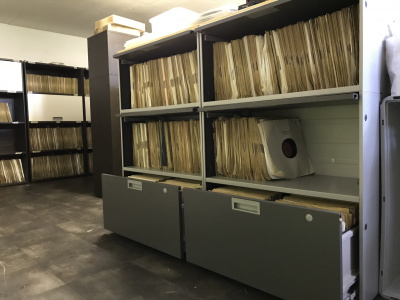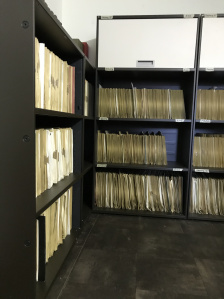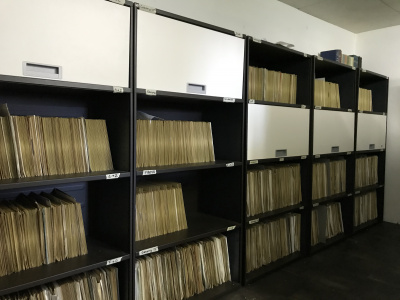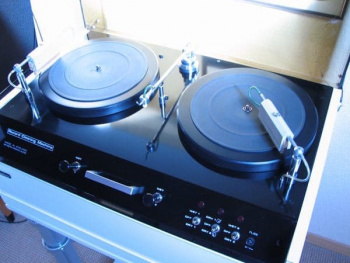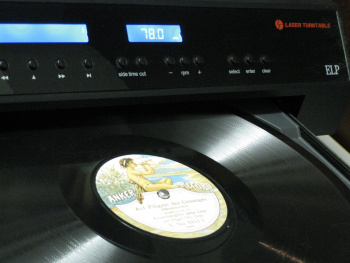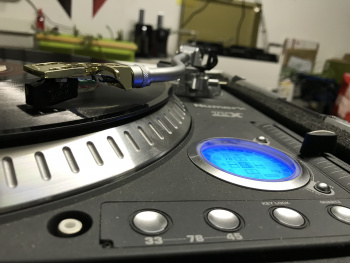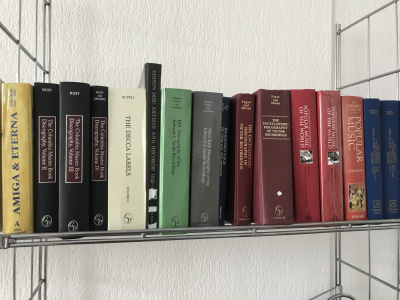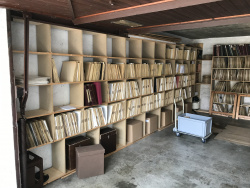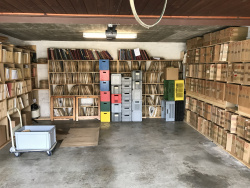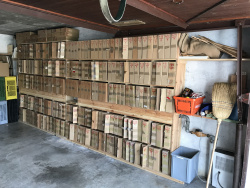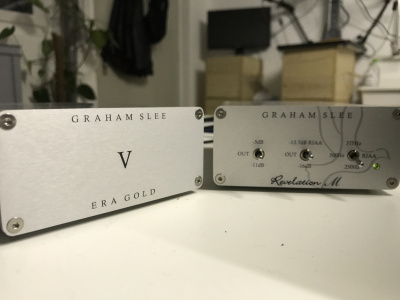Difference between revisions of "CC-Zero-Project"
(→Inspection) |
(→Inspection) |
||
| Line 62: | Line 62: | ||
* Reduce the metadata information fields to a minimum | * Reduce the metadata information fields to a minimum | ||
* Check the copyright status | * Check the copyright status | ||
| − | * Upload the audio file (24-Bit, 192 kHz, FLAC) to '''[[:commons:Special:ListFiles/Namrood| | + | * Upload the audio file (24-Bit, 192 kHz, FLAC) to Wikimedia Commons good documented with references |
| + | |||
| + | === Wikimedia Commons Upload statistics === | ||
| + | * My '''[[:commons:Special:ListFiles/Pdproject|Uploads]]''' for the Public Domain Project until 2018 | ||
| + | * My '''[[:commons:Special:ListFiles/Namrood|Uploads]]''' for the CC-Zero-Project since 2020 | ||
== Continous Workflow == | == Continous Workflow == | ||
Revision as of 14:37, 11 January 2022
The CC-Zero-Project is an ambitious project that collects musicological worth protecting analogue and digital sound recordings. Our goal is the free availability of public domain related content like music, sound or voice recordings.
Contents
Background
After my activities as an entrepreneur between 1988 and 1998 in the film- and music industry, I have founded after the millenium an Internet Radio Service to broadcast parts of my music collection which I built up since 1977. The focus was on the purchase of rarities that are significant in musicology. The collection contains today 2'000 phonograph cylinders, 45'000 78 rpm gramophone records, 25'000 vinyl discs, 15'000 compact discs and 500 laserdiscs. After long time spending to discuss with the collecting societies to create a contract for amateur broadcasters, the next step was to set up the Swiss Internet Radio Association. In 2009 I founded with a friend (expert of copyright law) the Public Domain Project, today a music archive and online library with 35'000 gramophone records. I left the Swiss Foundation Public Domain in the end of 2019.
Collection Overview
The main part of the collection is classical music between the baroque era and the 21st century in their variety of musical forms: chamber-, dance-, orchestral music, performing arts, piano pieces, sacred and secular vocal music. The 2nd largest part is jazz and swing music. During my business activities in the 1990s in the Middle East and West Africa I have started to collect rare ethnical vocal recordings and folk music. In the 2000s I began systematically to buy the earliest sound recordings, mainly phonograph cylinders of Edison and Pathé. My collection of phonograph cylinders was classified by Memoriav in 2016 as particularly valuable and therefore worth protecting. I found all kinds of oddities on record fairs and flea markets in Australia, Canada, England and the United States. My attempt to export a custom-made salon horn to Europe for an Edison Triumph phonograph failed due to local airline regulations in Amarillo, Texas.
Archive in Hinwil
The main archive is located in Hinwil ZH and contains mainly Classical music.
Digitization and Records Cleaning
Cleaning of 78 rpm Gramophone records and Vinyl with the Keith Monks Audio Laboratories Dual-Recod Cleaning machine. Digitization with the ELP Laser turntable LT-2XA and the Numark TTX turntable.
Rightsclearing
Hundreds of books I have collected during my music studies. Most important are the Encyclopedic Discographies of each Record label, mainly written and illustrated from other music historians and collectors. Biographies of music authors are published in the New Grove Dicitonary of Music and Musicians, the Musik in Geschichte und Gegenwart and Wikpedia. For US authors I have to check the status in the Catalog of Copyright Entries published by the US Copyright Office.
Last Larger Collection Expansions
Relocations in April 2020
- The special assorted collection contains 18'000 Choral-, Orchestral- and piano works in "excellent" quality. It means the recordings are not often played. Many are rarely to find
Relocations in 2021
- The Swissjazzorama donated us over hundred rare discs of Enrico Caruso and Swiss folk music of the Duo Marthely Mumenthaler and Vrenely Pfyl, Rudolf «Ruedi» Rymann and Lys Assia
- More than 500 gramophone records and 2000 vinyl discs were delivered by a friend in the Bernese Oberland that owns a wholesale distribution
- Over 2400 gramophone records arrived from various donations and 2000 gramophone records are purchased
- Approx. 4000 vinyl discs of classical music were donated from a retired professor of the Schola Cantorum Basiliensis
- Approx. 1000 vinyl discs of classical music were donated from the Swiss Foundation Public Domain in Rüti ZH
Relocations in January 2022
- 10'000 grammophone records were purchased from a shop in Zurich. We received a complete collection from Latin- and South America in alphabetical order from an inheritance. The shop owner is a friend and have gifted us also over hundred operatic soprano recordings of Amelita Galli-Curci and operatic tenor recordings of Enrico Caruso and Benjamino Gigli. Some records of Yma Sumac, two very rare Ngoma discs of the Belgian Kongo, some discs of Brazillian and Argentinian musicians and various Rock 'N' Roll discs we have purchased for a special reduced price
Inspection
The CC-Zero-Project is continuing the idea behind the Public Domain Project in 2009. Do not waste time and money in the inventory and cataloging. It's a learning by doing concept:
- Inspection of material to digitize that could be in the public domain
- Enter the information from the record inside a database (we are planning our own Wikidata instance)
- Cleaning the record with a RCM (Record Cleaning Machine)
- Selection of the correct equalizer setting of the 78 rpm grammophone record
- Digitization of the record
- Reduce the metadata information fields to a minimum
- Check the copyright status
- Upload the audio file (24-Bit, 192 kHz, FLAC) to Wikimedia Commons good documented with references
Wikimedia Commons Upload statistics
Continous Workflow
I have been specializing in the digitization and rightsclearing of historical audio documents for eleven years. The processes and procedures have been continuously improved through my daily work. It is very difficult to find sponsors and at the same time to provide a continous workflow of high-quality digitized audio files with error-free metadata fields, well-documented informations about the 78 rpm records and finally the rightsclearing with irrefutable evidence that the recording is actually in the public domain.
Equalizing
The CC-Zero-Project is using three different phono preamplifiers. This means that the audio signals can be processed in the best possible quality by taking the correct equalizer setting. Acoustic and electrical recordings before 1925 had no cutting characteristics. Smaller labels only began to standardize their recordings in the mid-of the 1930s. Before the introduction of the RIAA equalization in 1955 there was no standardization. There was wild growth.
